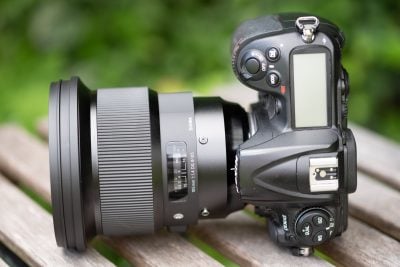Sigma 105mm f1.4 Art review
-
-
Written by Thomas
Quality
Testing: Longitudinal Chromatic Aberration and focus shift
Lenses with focal ratios of f2.8 or larger are often prone to longitudinal color aberrations (loCA, a.k.a. “axial color” or “bokeh CA”). These show up as magenta coloration in the foreground and greenish hues in the background and are not easily corrected in post-processing. The new Sigma is no exception: it shows quite some loCA at f1.4 and f2.0.
Sigma 105mm f1.4 Art Longitudinal Chromatic Aberration (loCA)
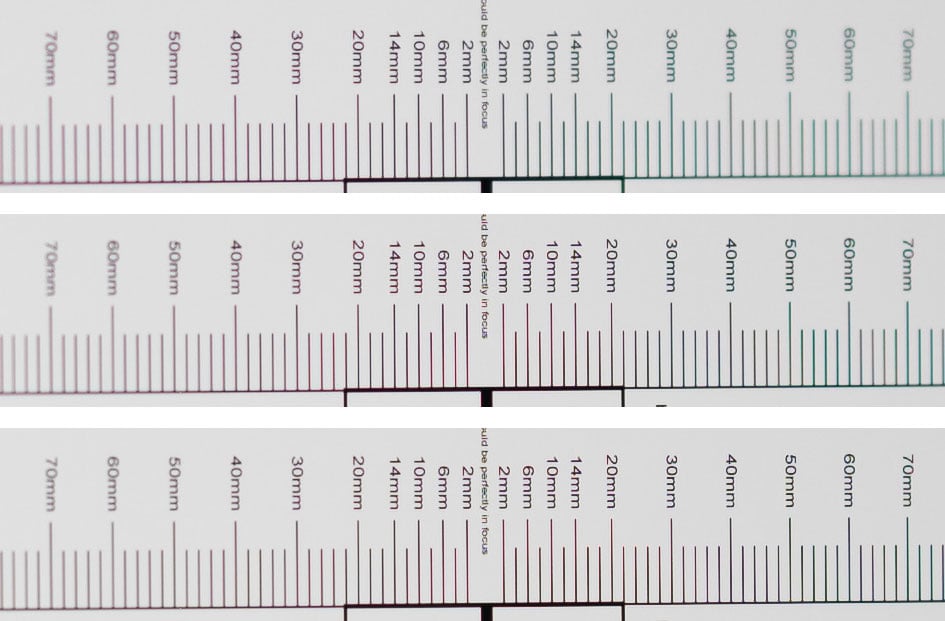
100% crops, from top to bottom: f1.4, f2.0, f2.8; left = foreground, right = background
The effect is visible in real life shots but completely gone at f4.0. Here’s a crop from an image shot at f1.4 showing some loCA on the water:
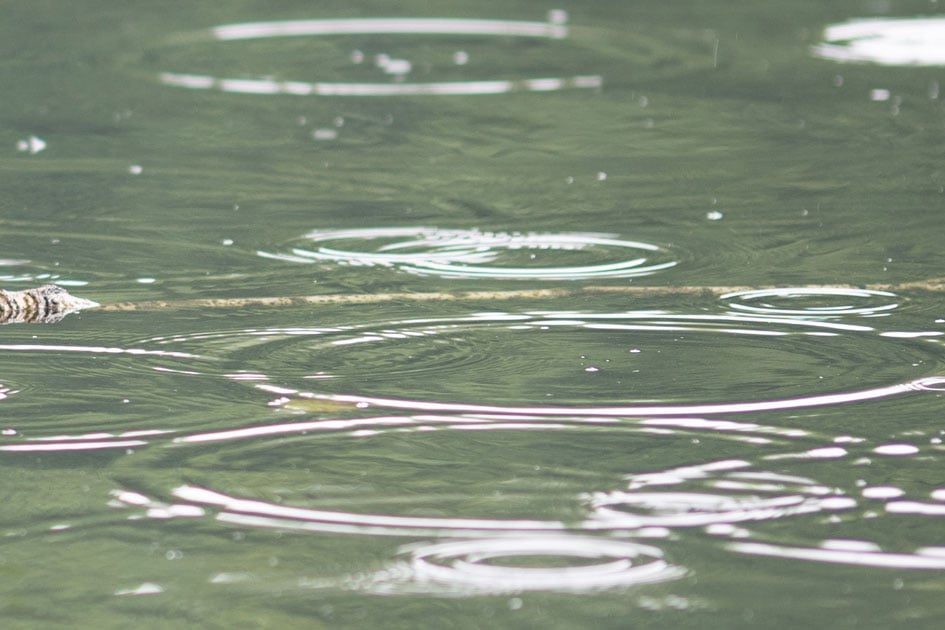
Above: Sigma 105mm f1.4 Art at f1.4, cropped; click image to access original at Flickr
The test also revealed that there is no focus shift to speak of at distances of 4-5m and farther away although the background sharpens up much faster than the foreground when the lens is stopped down. This effect increases when shooting at closer distances of 1-2m and I started to notice some slight focus shift when stopping down from f1.4 to f2.8.
Following are the result from different large aperture prime lenses:
Nikon 105mm f1.4E Longitudinal Chromatic Aberration (loCA)
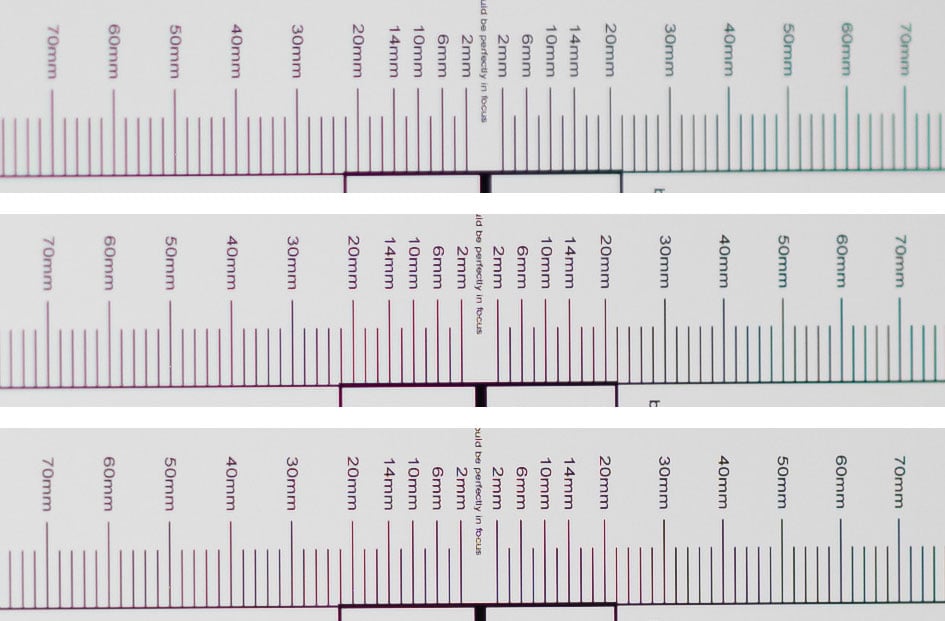
100% crops, from top to bottom: f1.4, f2.0, f2.8; left = foreground, right = background
Sigma 135mm f1.8 Art Longitudinal Chromatic Aberration (loCA)
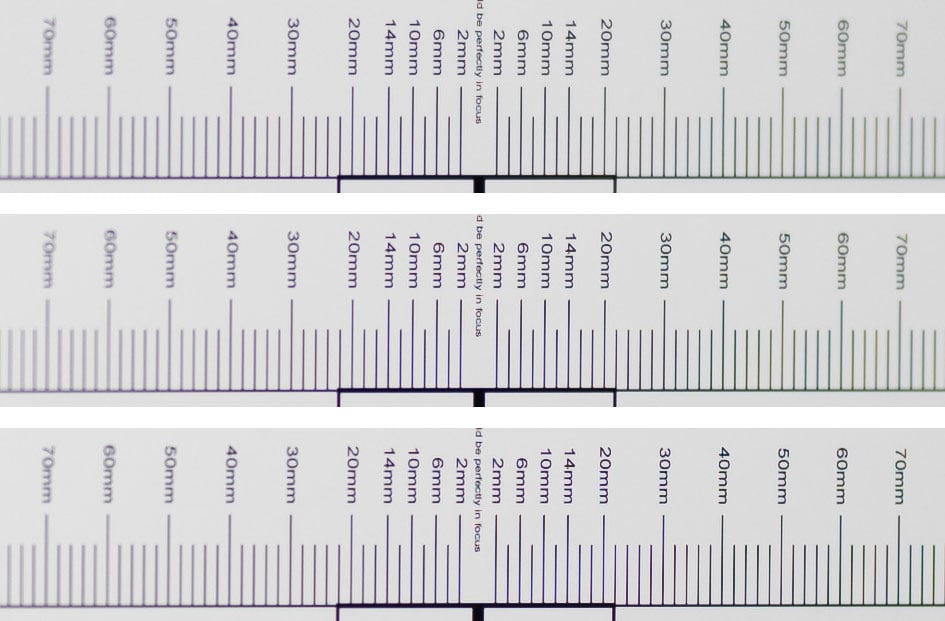
100% crops, from top to bottom: f1.8, f2.0, f2.8; left = foreground, right = background
Zeiss 85mm f1.4 Otus Longitudinal Chromatic Aberration (loCA)
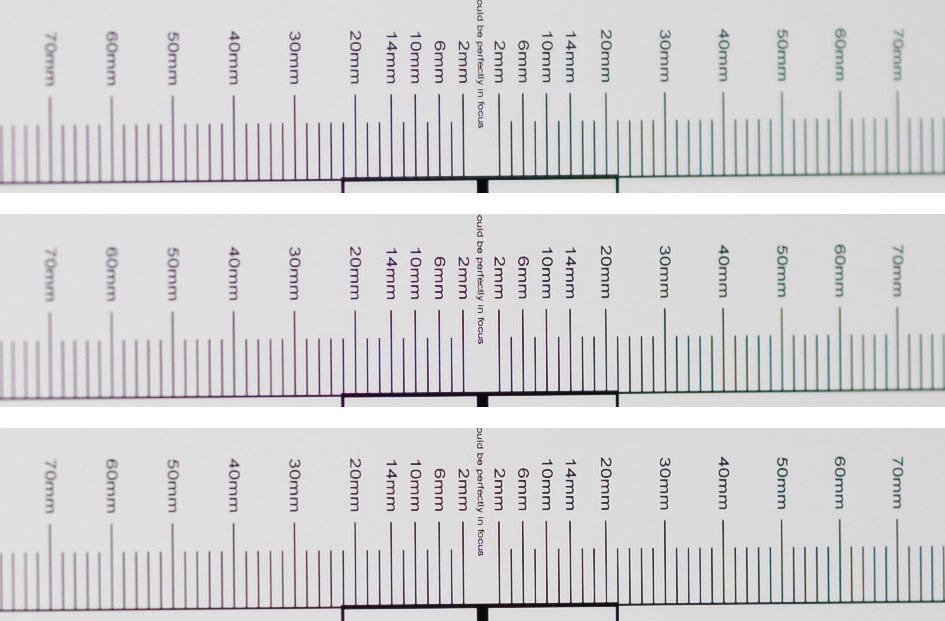
100% crops, from top to bottom: f1.4, f2.0, f2.8; left = foreground, right = background
The Nikon shows slightly stronger loCA than the new Sigma 105mm f1.4, while both the Sigma 135mm f1,8 and the Zeiss 85/1.4 Otus produce less loCA.
Sharpness and contrast
Let’s have a look at the theoretical performance of the new Sigma first and compare it to the performance of some alternatives:
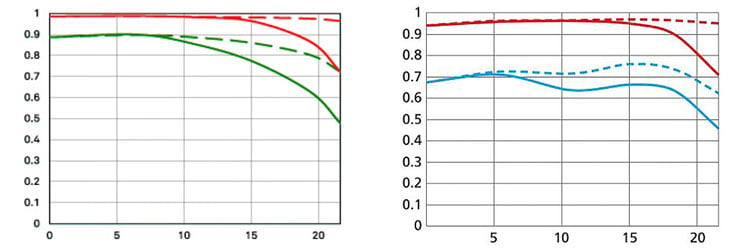
Above: MTF Sigma 105mm f1.4 Art at f1.4 (left); Nikon 105mm f1.4E at f1.4 (right)
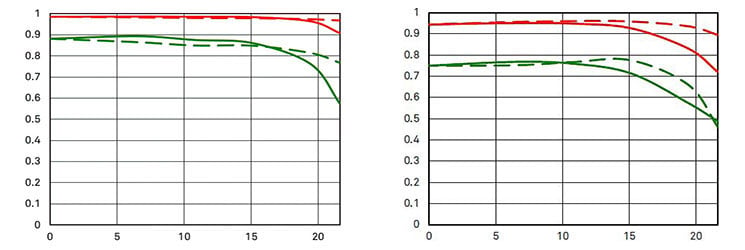
Above: MTF Sigma 135mm f1.8 Art at f1.8 (left); Sigma 85mm f1.4 Art at f1.4 (right)
These charts show the performance of the lenses at their largest aperture without influence of diffraction. In these charts higher values are better and the closer the line-pairs are together the less astigmatism (= resolution depends on the orientation of the test-pattern) the lens has. The x-axis displays the distance from the optical axis (= center of the sensor) in mm. I’ll show you the real-life performance at 4 mm (“center”), 13 mm (“APS-C/DX-corner”), and 20 mm (“FF/FX-corner”) on a 46MP Nikon D850 body.
From the charts the new Sigma looks very good indeed: overall contrast and sharpness is only bested by Sigma’s own 135mm f1.8 Art but that lens benefits from being only f1.8. Compared to the Nikon 105mm f1.4E and Sigma’s 85mm f1.4 Art the new Sigma should show higher resolution of fine details with a soft roll-off outside the APS-C/DX image circle.
Let’s see how this theoretical performance translates into real life results in the sharpness test based on Siemens-stars shot with a 46MP Nikon D850 at a distance of around 4.5m. Processing was done in Lightroom 7.4/CRAW 10.4 from RAW to Adobe Color profile. Noise-reduction is set to 0, sharpening to 50/0.5/36/10, with no extra tone, color, or saturation adjustment.
White-balance was adjusted to a neutral white and I did some exposure compensation to make the brightness of all crops match. So you will not see light fall-off in the corners. Removal of lateral color aberrations is ON, longitudinal CA are not corrected.
The following are all 100% crops!
Sigma 105mm f1.4 Art shot with Nikon D850; 100% crop from center, APS-C/DX-corner, FF/FX-corner

Above: 105mm, f1.4

Above: 105mm, f2.0

Above: 105mm, f2.8

Above: 105mm, f4.0

Above: 105mm, f5.6

Above: 105mm, f8.0

Above: 105mm, f11
These 100% crops directly from a 46MP D810 sensor show very good performance from this lens right from f1.4 with only a little softening towards the corners of a full-frame sensor. All crops for an aperture were taken from the same shot as there is no discernible field curvature at this distance. The effect of diffraction can be seen even at f8.
The following comparison shows the Sigma 105mm f1.4 Art, the Nikon 105mm f1.4E ED, the Sigma 135mm f1.8 Art and the Zeiss 85mm f1.4 Otus wide open:

Above: Sigma 105mm f1.4 Art at f1.4

Above: Nikon 105mm f1.4E ED at f1.4

Above: Sigma 135mm f1.8 Art at f1.8

Above: Zeiss 85mm f1.4Otus at f1.4
The new Sigma is indeed sharper than the Nikon and right up there with the Sigma 135mm f1.8 and the Zeiss Otus.
Performance at long distances
The Siemens-star test-targets are shot at a distance of 45x focal length (i.e. at 4.7 m for 105 mm focal length). But performance of lenses also depends on the shooting distance. Therefore I present another series of test-shots of a city around 1 km away on a D850. Processing was done in Lightroom 7.4/CRAW 10.4 from RAW to Adobe Color profile. Noise-reduction is set to 0, sharpening to 50/0.5/36/10, with no extra tone, color, or saturation adjustment. There’s no tinkering with vignette-control so you see it here as it is produced by the lens. I used manual focus in live view optimized for the center at the largest aperture and did not change focus for other apertures. All shots were made at ISO 64. As usual I have selected the diagonal that provided the better corner results as almost any lens is a bit decentered.
The main image shows the complete scene wide open to give you an impression of the angle of view and to judge vignetting. This is followed by one row of 100% crops from f1.4 to f11 each from the middle, the APS-C/DX-corner and the FF/FX-corner.
You can click on each image to access the large original. Please respect our copyright and only use those images for personal use.
Sigma 105mm f1.4 Art shot with Nikon D850
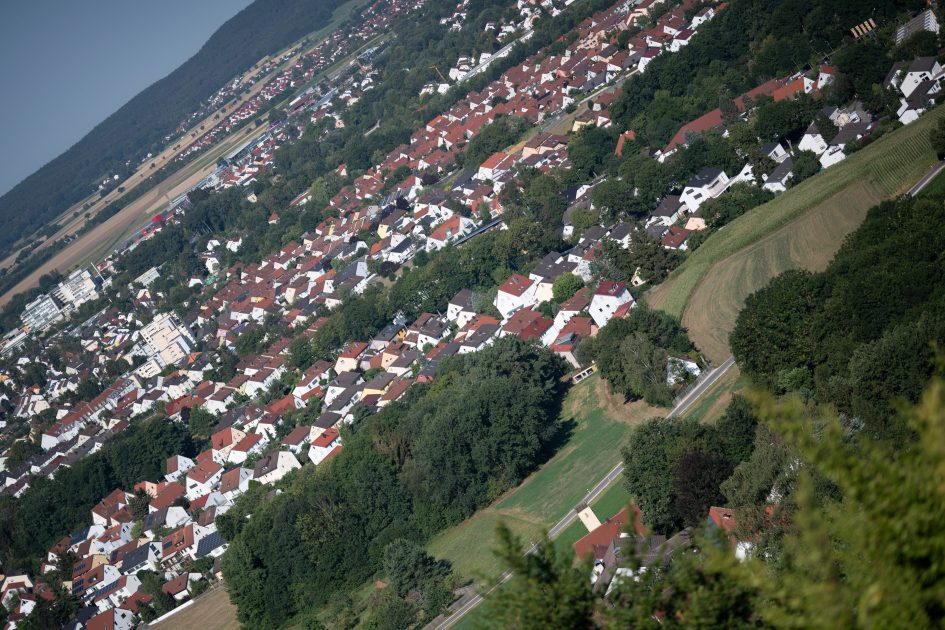
Above: 105mm, f1.4; also available at f2.0, f2.8, f4.0, f5.6, f8.0, f11

Above: 105mm, f1.4

Above: 105mm, f2.0

Above: 105mm, f2.8

Above: 105mm, f4.0

Above: 105mm, f5.6

Above: 105mm, f8.0

Above: 105mm, f11
In this long distance test the new Sigma again shows its merit: its performance is very good even wide open across the sensor. And the amount of vignetting seems pretty moderate for an f1.4 lens. Stop down to f2.8 to get very little light fall-off.
I shot the same scene within minutes with the Nikon 105mm f1.4E ED and the Zeiss 85mm f1.4 Otus. Plus with the Sigma 135mm f1.8 Art the following day with similar atmospheric conditions:

Above: Sigma 105mm f1.4 Art at f1.4

Above: Nikon 105mm f1.4E ED at f1.4; also available at f1.6, f1.8, f2.0, f2.8, f4.0, f5.6, f8.0, f11

Above: Sigma 135mm f1.8 Art at f1.8; also available at f2.0, f2.8, f4.0, f5.6, f8.0, f11

Above: Zeiss 85mm f1.4 Otus at f1.4; also available at f1.6, f1.8, f2.0, f2.8, f4.0, f5.6, f8.0, f11
The new Sigma 105mm f1.4 Art wins this comparison as the sharpest lens right into the orners of the full-frame sensor followed closely by the Sigma 135mm at f1.8, the Zeiss 85mm f1.4 Otus and the Nikon 105mm f1.4E. But all four lenses perform in a way not thought possible wide open only a few years ago.
Rendering of point-light sources at night-shots
Night-shots pose a different challenge for lenses as the contrast is even higher than under bright sun and point-light sources can reveal some weaknesses such as coma, haloing and color-aberrations that do not show up as prominently in other test-shots. The 100% crops below the main image show the effect of coma in the FX-corner of the new Sigma and the competition at various apertures:
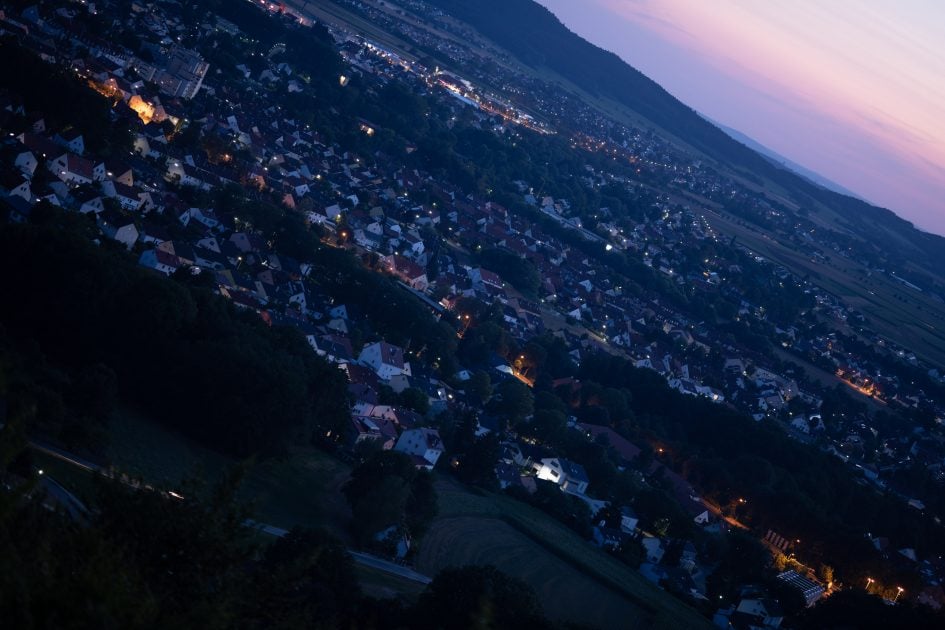
Above: Sigma 105mm f1.4 Art at f1.4; also available at f2.0, f2.8, f4.0

Above: Sigma 105mm f1.4 Art; FF/FX-corner at f1.4 (left), f2.0 (middle), f2.8 (right)

Above: Nikon 105mm f1.4E; FF/FX-corner at f1.4 (left), f2.0 (middle), f2.8 (right)

Above: Sigma 135mm f1.8 Art; FF/FX-corner at f1.8 (left), f2.0 (middle), f2.8 (right)
The new Sigma has no coma to speak of, just like the Sigma 135mm f1.8 Art. The Nikon 105mm f1.4E in comparison shows a little coma.
Rendering of out-of-focus point-light sources and Bokeh
This test is for the rendering of point-light sources in an out-of-focus background. The circle of confusion that is produced by this test is pretty indicative of Bokeh performance (in the background) and light fall-off. Ideally the out-of-focus image of the point-light is evenly lit and perfectly circular, with no “onion-rings”, and without coloration. Large aperture lenses normally produce an effect known as “cat’s eye” the further away from the optical axis the point-light is projected. This is due to optical vignetting in the lens barrel when light enters the lens from an angle.
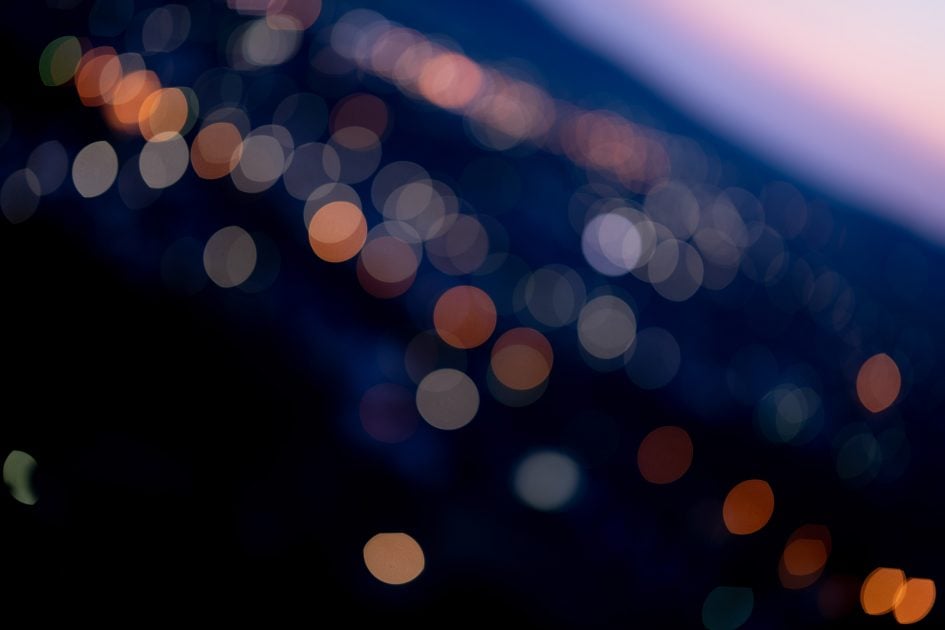
Above: Sigma 105mm f1.4 Art at f1.8; also available at f2.0, f2.8, f4.0, f5.6

Above: Sigma 105mm f1.4 Art at f1.4; 44% crops from center, DX-corner, FX-corner

Above: Nikon 105mm f1.4E at f1.4; 44% crops from center, DX-corner, FX-corner

Above: Sigma 135mm f1.8 Art at f1.8; 44% crops from center, DX-corner, FX-corner
As the crops above show: The Sigma 105mm f1.4 Art produces very big Bokeh balls when used wide open. It exhibits almost no onion rings which is quite a feat for a lens employing an aspheric lens element. Light-distribution across the circle is very even. and outlining is low. The Bokeh balls show no green coloration from loCA and there’s a relatively moderate cat’s eye effect and some clipping from the mirror-box. The Nikon 105mm f1.4E looks quite similar but with a stronger cat’s eye effect indicating a stringer light fall-off towards the corners. The Sigma 135mm f1.8 Art produces the biggest and brightest Bokeh balls outside the center and shows (almost) no clipping from the mirror box. But outlining is a bit stronger than from the Sigma 105mm f1.4 Art.
Let’s see how this analysis of out-of-focus point-light sources translates into Bokeh-performance shooting a bookshelf:
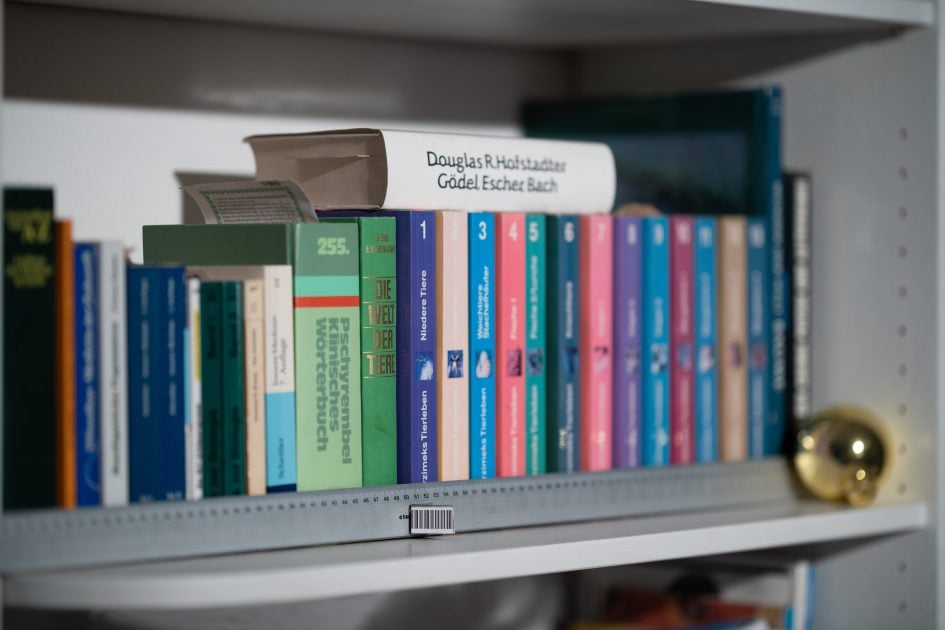
Above: Sigma 105mm f1.4 Art at f1.4 shot on a D850; also available at f2.0, f2.8, f4.0, f5.6

Above: Sigma 105mm f1.4 Art at f1.4 shot on a D850; 44% crops from foreground, middle-ground, background

Above: Nikon 105mm f1.4E ED at f1.4 shot on a D810; 50% crops from foreground, middle-ground, background; also available at f2.0, f2.8, f4.0, f5.6, f8.0

Above: Sigma 135mm f1.8 Art at f1.8 shot on a D810; 50% crops from foreground, middle-ground, background; also available at f2.0, f2.8, f4.0, f5.6, f8.0

Above: Zeiss 85mm f1.4 Otus at f1.4 shot on a D810; 50% crops from foreground, middle-ground, background; also available at f2.0, f2.8, f4.0, f5.6
The new Sigma indeed produces the best Bokeh I’ve seen so far: It’s already soft in the transition zone (middle-ground) with only a slight hint of greenish loCA and becomes beautifully blurred in the background without any nervousness or harsh contours. Even the foreground is pretty smooth.
The other lenses are not bad at all with the Sigma 135mm and the Zeiss Otus being even more color neutral in the middle-ground due to their better correction of loCA. But they cannot quite reach the background blur of the new Sigma 105mm f1.4 Art.
To see how this looks when shooting portraits head over to the Samples section.
Flare/ghosting
A strong light-source shining directly into the lens could produce strange colorful ghosts-images or reduce contrast considerably through flare and glare. The appearance of flare and ghosting depends on factors like the aperture and the angle of the light hitting the lens. So to judge the proclivity of the Sigma for these artifacts I went through a series of well calculated shots against a strong light source to provoke flare, glare, and ghosting.
The lens produces some glare at f1.4 but flare and ghosting became more obvious when stopped down to f11:
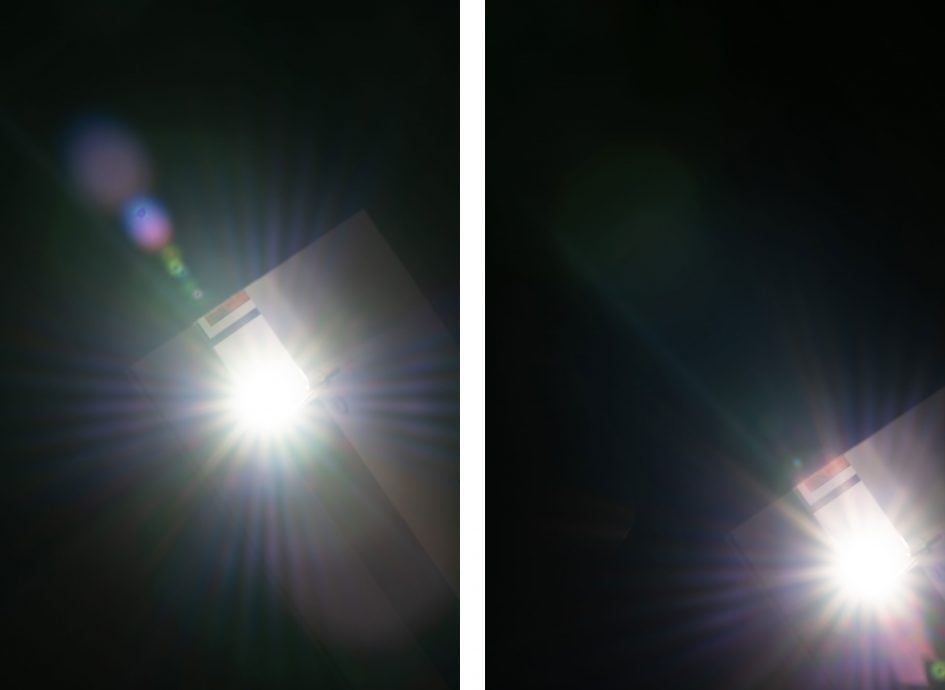
Above: Flare and ghosting. Strong light hitting the Sigma 105mm f1.4 Art at f11.0
When the light was further outside the frame (but still shining into the lens) there was almost no flare or ghosting. In comparison to the Nikon 105mm f1.4E the new lens seems a bit less prone to flare, glare, and ghosting when the light source is near the middle.
But still you better watch out. See the following two images which simply used a slightly different point of view:

Above: Sigma 105mm f1.4 Art at f1.4, 50% crop; click image to access original at Flickr

Above: Sigma 105mm f1.4 Art at f1.4, 50% crop; click image to access original at Flickr
Check prices at Amazon, B&H, Adorama, eBay or Wex. Alternatively get yourself a copy of my In Camera book, an official Cameralabs T-shirt or mug, or treat me to a coffee! Thanks!




